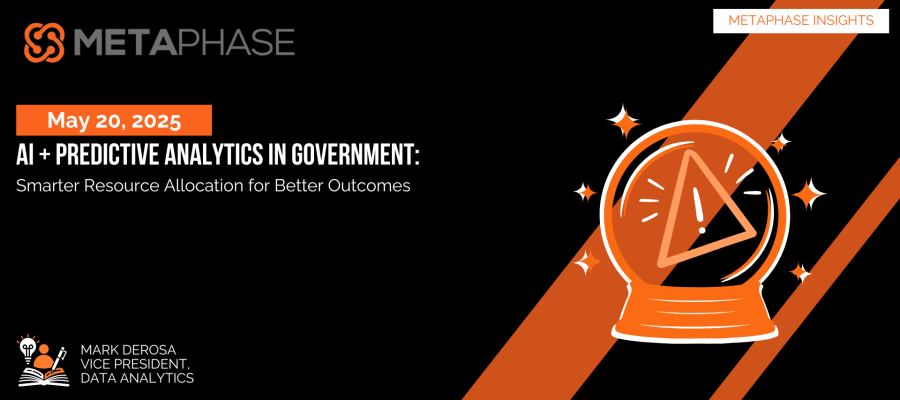
What if we could predict the next outage before it happens? Federal agencies manage complex operations that rely on accurate forecasting, whether it’s preparing for natural disasters, optimizing workforce plans, or ensuring the availability of critical infrastructure. Yet too often, agencies rely on incomplete data and manual processes to allocate resources—reacting to crises instead of anticipating them. Predictive analytics is changing by using artificial intelligence (AI) and data science to forecast demand, identify risks, and optimize decision-making in real time.
AI-powered predictive analytics enables agencies to move beyond static budgeting and planning cycles. By analyzing patterns in spending, workforce data, and operational efficiency, AI-driven models can help agencies anticipate funding shortfalls, identify areas for reallocation, and prevent costly mistakes. Instead of reacting to a budget deficit at the end of the fiscal year, agencies can use predictive models to spot potential gaps months in advance and adjust their strategies accordingly.
Staffing shortages are another area where predictive analytics is making a real impact. Federal agencies have long struggled with workforce planning, often facing unexpected vacancies, skill gaps, and hiring delays that disrupt operations. AI-powered models can analyze workforce trends, retirement forecasts, and applicant pipelines to help agencies proactively recruit and retain talent where it’s needed most. By aligning staffing levels with projected demand, agencies can ensure continuity of service and reduce costly hiring inefficiencies.
Beyond budgeting and workforce planning, predictive analytics is also improving infrastructure management. Agencies responsible for maintaining public utilities, critical facilities, transportation networks, and emergency response systems can leverage AI to forecast equipment failures, schedule proactive maintenance, and minimize downtime (i.e., Predictive Maintenance, PdM). For example, a public engineering agency could use AI-powered predictive analytics to evaluate asset and component conditions to deploy repair crews before a critical failure occurs, preventing costly disruptions and ensuring public safety.
The success of predictive analytics depends on data quality, integration, and transparency. Agencies must invest in robust data management frameworks to ensure models are trained on accurate, unbiased information to produce reliable results. Additionally, integrating predictive insights into existing workflows requires a culture shift—moving from reactive decision-making to proactive, data-driven strategies.
Federal agencies that embrace AI-powered predictive analytics will gain a strategic advantage in resource allocation, risk mitigation, and operational efficiency. The ability to anticipate challenges rather than simply respond to them is what will define the next generation of government service.

